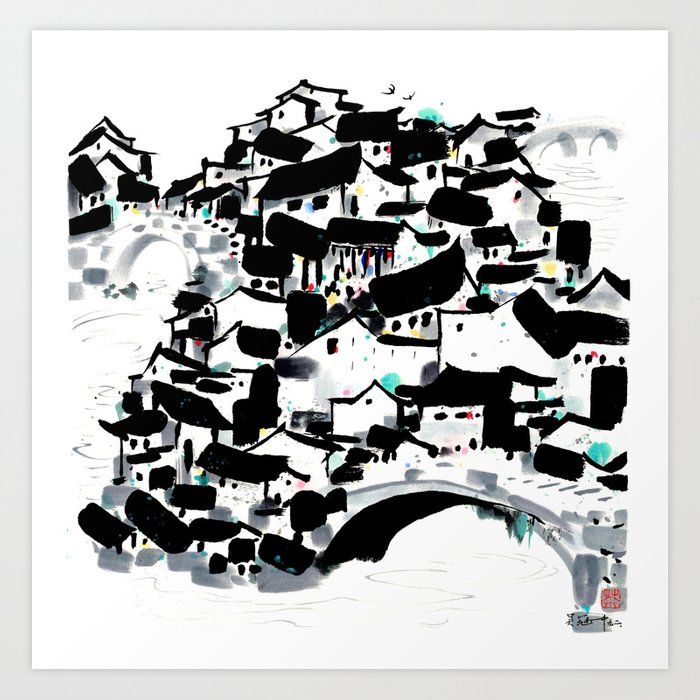Text notes: Architecture of Complexity

“In this paper I should like to report on some things we have been learning about particular kinds of complex systems encountered in the behavioral sciences.”
An outline of Herbert Simon’s 1962 essay, “The Architecture of Complexity“
INTRODUCTION
Objective: Describe the usefulness of complex systems across fields. By being abstract, may have relevance (careful to not say application) to other systems like those in social, biological, and physical systems. Discuss points that are “applicable to the complexity of systems without specifying the exact content of that complexity.”
Definition of complex systems:
- “Roughly, by a complex system I mean one made up of a large number of parts that interact in a nonsimple way”
- “W. Weaver has distinguished two kinds of complexity, disorganized and organized. We shall be primarily concerned with organized complexity.”
Central theme:
- Complexity frequently takes the form of hierarchy
- Hierarchic systems have common properties independent of their specific content
The paper has 4 parts:
- Complex systems frequently take the form of hierarchy
- Relation between structure and time required for it to emerge through evolutionary process
- Nearly decomposability
- Relation between systems and description
Inspiration:
- Conversations with colleague Allen Newell
- Editorial comments from George W. Corner
- Manuscript comments from Richard Meier, John R. Platt, and Warren Weaver
Useful concepts from Cybernetics:
- Feedback
- Homeostasis
- Analyzing “adaptiveness” in terms of “theory of selective information”
1. HIERARCHIC SYSTEMS
Definitions
Hierarchy systems: systems composed of interrelated subsystems, each in turn also hierarchic in structure; parts within parts (Not narrowed to structures of levels of subordination, but inclusive of)
Examples:
- Social: organizations, families
- Biological: cells
- Physical: particles, atoms, molecules
- Symbolic: book
How to describe hierarchic structure?
- Physical / biological systems typically described in spatial terms, while Social systems typically described as interactions (not necessarily spatial)
- To reconcile this: define hierarchy in terms of intensity of interaction (where for phys / bio, intense interaction implies spatial propinquity)
- Note: specialized communications and transportation types allow spatial propinquity to be less determinative of structure (e.g. think local supply global demand)
Definition of span: number of subsystems into which subsystems are further partitioned
2. EVOLUTION OF COMPLEX SYSTEMS
Problem solving as natural selection
Parable: Hora & Tempus
There once were two watchmakers, named Hora and Tempus, who manufactured very fine watches. Both of them were highly regarded, and the phones in their workshops rang frequently -new customers were constantly calling them. However, Hora prospered, while Tempus became poorer and poorer and finally lost his shop. What was the reason?
…
The watches that Hora made were no less complex than those of Tempus. But he had designed them so that he could put together subassemblies of about ten elements each. Ten of these subassemblies, again, could be put together into a larger subassembly; and a system of ten of the latter subassemblies constituted the whole watch. Hence, when Hora had to put down a partly assembled watch in order to answer the phone, he lost only a small part of his work, and he assembled his watches in only a fraction of the man-hours it took Tempus.
Human problem solving can be described as searching through a maze
Starting with the axioms and previously proved theorems, various transformations allowed by the rules of the mathematical systems are attempted, to obtain new expressions. These are modified in turn until, with persistence and good fortune, a sequence or path of transformations is discovered that leads to the goal.
The process usually involves a great deal of trial and error. Various paths are tried; some are abandoned, others are pushed further. Before a solution is found, a great many paths of the maze may be explored. The more difficult and novel the problem, the greater is likely to be the amount of trial and error required to find a solution. At the same time, the trial and error is not completely random or blind ; it is, in fact, rather highly selective. The new expressions that are obtained by transforming given ones are examined to see whether they represent progress toward the goal. Indications of progress spur further search in the same direction; lack of progress signals the abandonment of a line of search. Problem solving requires selective trial and error.
Bringing it all together
A little reflection reveals that cues signaling progress play the same role in the problem-solving process that stable intermediate forms play in the biological evolutionary process. In fact, we can take over the watchmaker parable and apply it also to problem solving. In problem solving, a partial result that represents recognizable progress toward the goal plays the role of a stable subassembly.
Selectivity ~ Feedback of information from the environment
2 sources of selectivity in problem solving:
- Iterative trial and error
- Those transformations that are stable provide building blocks for further construction
- It is THIS information about stable configurations (and not free energy / negentropy from the sun) that guides the process of evolution and provides the selectivity essential
- Previous experience
- In trial and error, search is greatly reduced
- Reduce it to a problem previously solved
To conclude:
- Complex systems will evolve from simple systems much more rapidly if there are stable intermediate forms than if there are not
3. NEARLY DECOMPOSABLE SYSTEMS
Interaction among vs. within subsystems
- Interactions among subsystems are weak but not negligible
- Higher frequency dynamics are associated with subsystems and lower frequency dynamics are associated with larger systems (Note to self: Similar to pace layers!)
- Short run behavior of each component subsystem is approx. independent of short run behavior of the others
- Long run behavior of any one component depends only in an aggregate way on the behavior of the others
See “Aggregation of Variables in Dynamic Systems” Econometrica 1961
To conclude:
- Hierarchies have the property of near-decomposability, where INTRAcomponent linkages are stronger than INTERcomponent linkages
- This allows us to decouple high-frequency dynamics (within) from low-frequency ones (among)
4. THE DESCRIPTION OF COMPLEXITY
Outline form
When information is in outline form, it’s easier to include information about the relations among major parts and info about internal relations of parts of each of the suboutlines
For ND systems: little info is lost by representing hierarchies in outline form
- Sub parts belonging to different parts only interact in an aggregated fashion– the detail of their interaction can be ignored
There is no conservation law that requires the description of a complex system to be as cumbersome as the object described
Simplicity, Redundancy
- Hierarchic systems are usually composed of only a few different kinds of subsystems, in various combinations and arrangements
- Hierarchic systems are often nearly decomposable
- Only aggregative properties of their parts enter into the description of interactions of those parts
- By adopting a descriptive language that allows the absence of something to go unmentioned, a nearly empty world can be described concisely
- By “recoding” can make patent (i.e. legible) the redundancy that is present but unobvious in the structure of a complex system
- Example of recoding: Replacing a description of the time path with a description of a differential law that generates that path
Descriptions
There are two types of descriptions, the warp and weft of our experience:
- State: World as sensed
- Process: World as acted upon
The distinction between the world as sensed and the world as acted upon defines the basic condition for survival of adaptive organisms:
The organism must develop correlations between goals in the sensed world and actions in the world of process. When they are made conscious and verbalized, these correlations correspond to what we usually call means-end analysis. Given a desired state of affairs and an existing state of affairs, the task of an adaptive organism is to find the difference between these two states, and then to find the correlating process that will erase the difference.
Problem solving is a continual translation between state and process descriptions
- Given a blueprint, find the corresponding recipe
To conclude:
- How complex or simple a structure is depends critically upon the way in which we describe it
- Use redundancy to simplify their description but must make sure to have the right representation
FINAL CONCLUSION
Our speculations have carried us over a rather alarming array of topics, but that is the price we must pay if we wish to seek properties common to many sorts of complex systems.
In an effort to better understand complex systems, the concept of “hierarchy” is critical
- Complex systems exhibit hierarchic structure
- Hierarchies have a property called “near-decomposability”
- Near-decomposability…
- Simplifies the behavior (and enables stability) of a complex system
- Simplifies the description of a complex system
